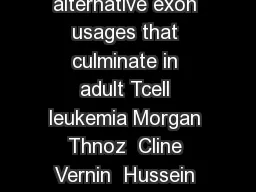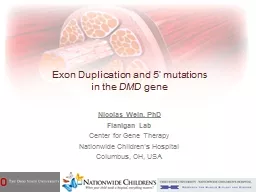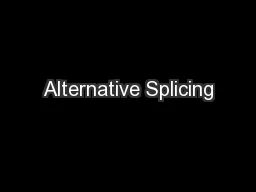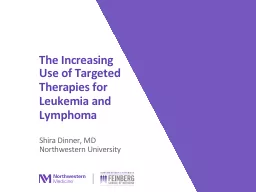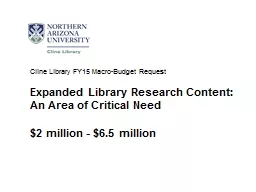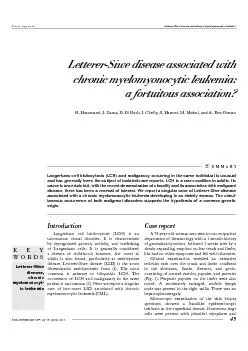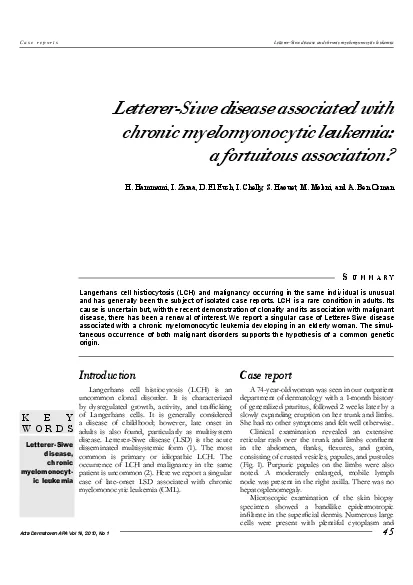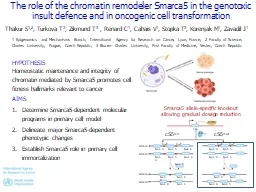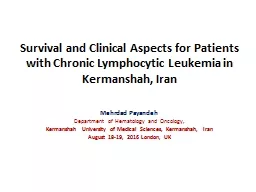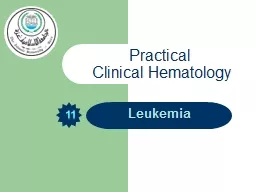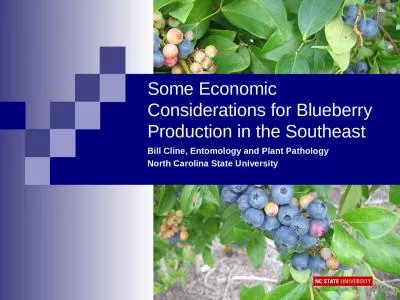PDF-RESEARCH Open Access HTLVinfected CD Tcells display alternative exon usages that culminate
Author : marina-yarberry | Published Date : 2015-03-13
We hypothesized that besides these quantitative transcriptional effects HTLV1 qualitatively mo difies the pattern of cellular gene expression Results Exon expression
Presentation Embed Code
Download Presentation
Download Presentation The PPT/PDF document "RESEARCH Open Access HTLVinfected CD Tce..." is the property of its rightful owner. Permission is granted to download and print the materials on this website for personal, non-commercial use only, and to display it on your personal computer provided you do not modify the materials and that you retain all copyright notices contained in the materials. By downloading content from our website, you accept the terms of this agreement.
RESEARCH Open Access HTLVinfected CD Tcells display alternative exon usages that culminate: Transcript
Download Rules Of Document
"RESEARCH Open Access HTLVinfected CD Tcells display alternative exon usages that culminate"The content belongs to its owner. You may download and print it for personal use, without modification, and keep all copyright notices. By downloading, you agree to these terms.
Related Documents

